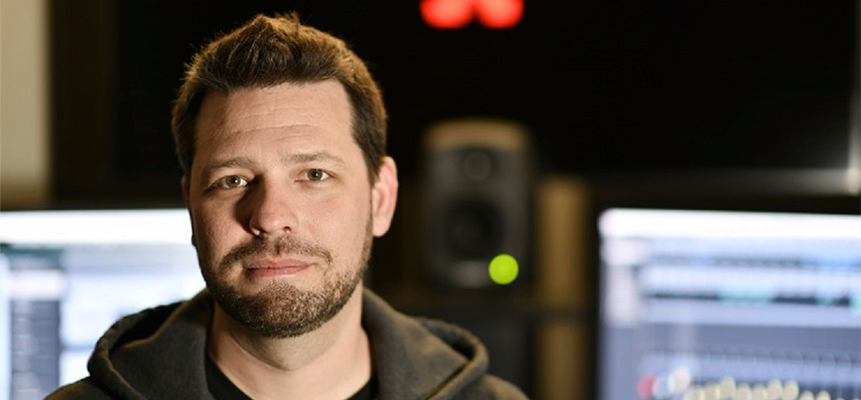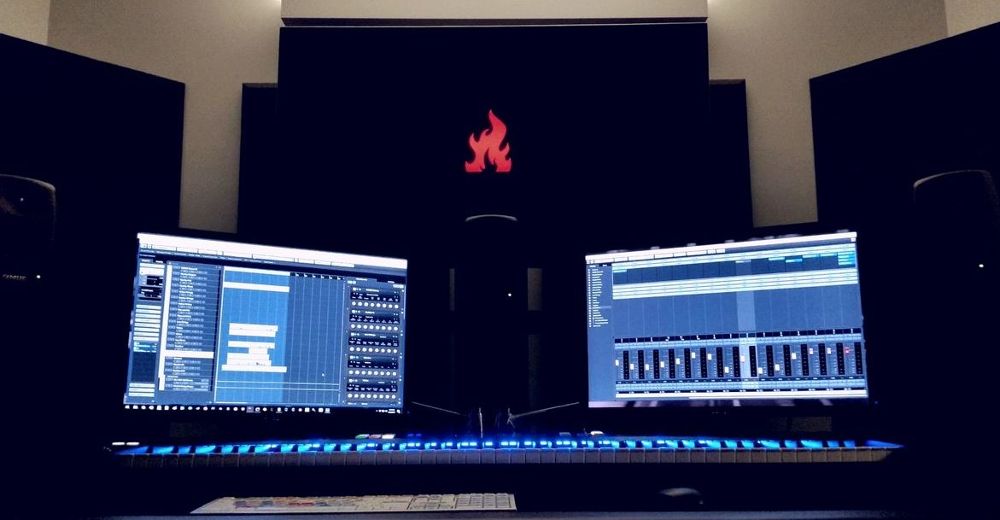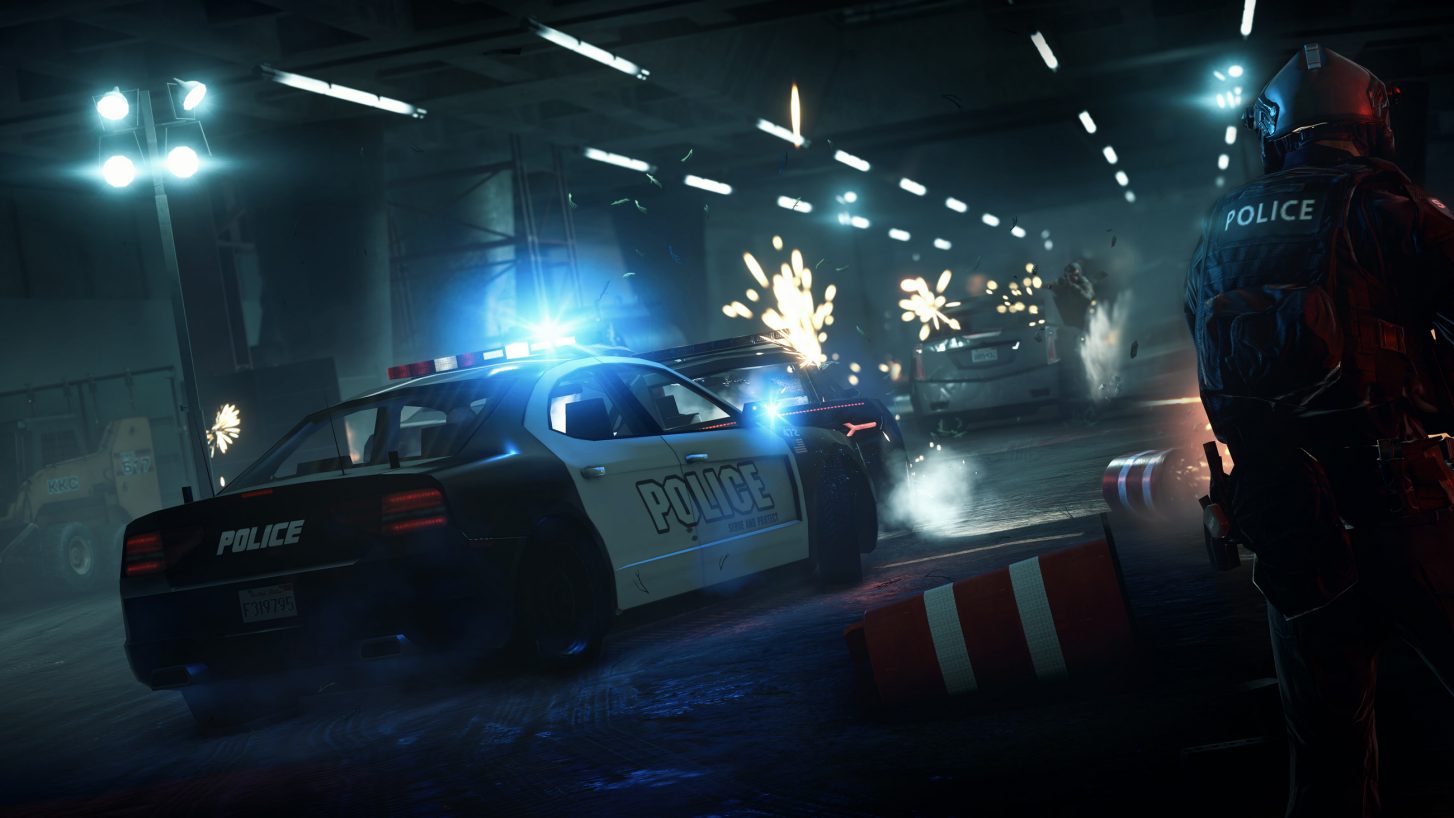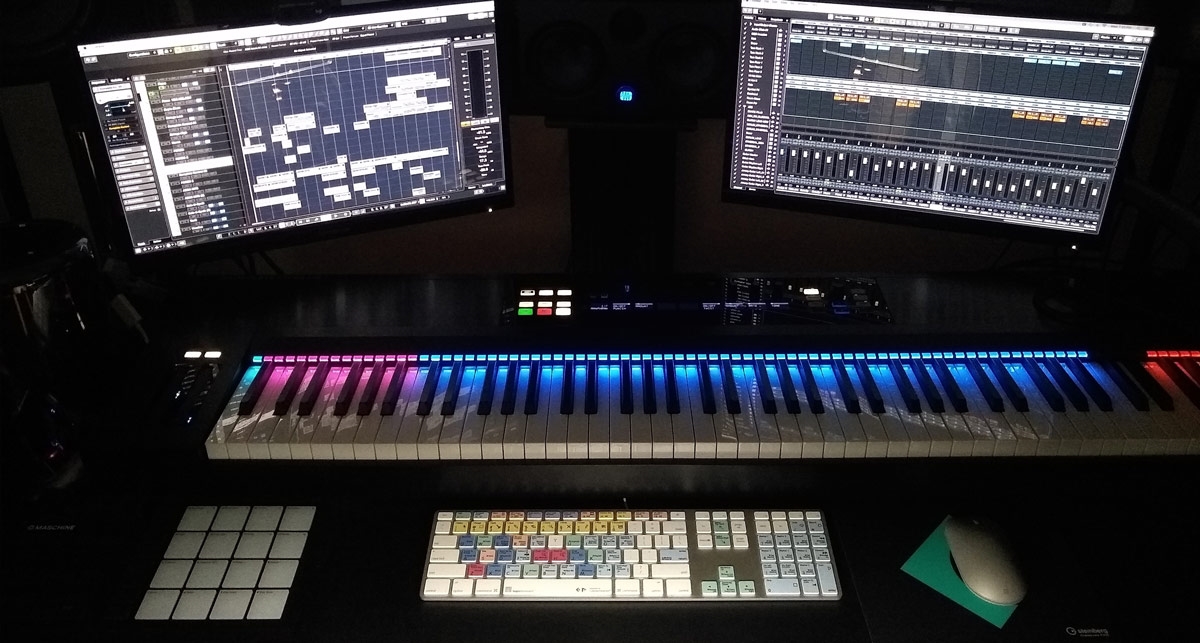| Audio Director Champion - Dave Lowmiller
Dave is using our Cubase and Reaper shortcut keyboards

Who is Dave Lowmiller?
I'm Audio Director for the game developer, Certain Affinity. I've been a video game audio designer and music creator since 1999. Over the course of my career I've been fortunate enough to be part of some of the best development teams in the world working on AAA franchises such as Battlefield, Call of Duty and Dead Space, also including work on Pixar's 'Cars' to name a few. Gaming is a never-ending passion for me, and I grew up with classic 8bit and 16bit consoles and have never stopped since. In college, I got an internship with Rainbow Studios and a chance to combine my love for games and music. I quickly discovered the joys of sound design, and luckily the internship was converted to a full-time position. I'm eternally grateful for that break.
Since that time I've also been lucky enough to work at Visceral Games (Electronic Arts) and now Certain Affinity with some of the most talented developers in the entire industry.
Outside of game audio, I'm a metal-head, songwriter, producer and multi-instrumentalist. I work primarily with my own band, A Dark Halo, but I've also been lucky enough to work with bands like Threat Signal, Powerflo and CONFLICT. And you can bet that my Logickeyboards are there! 
Dave's desk at Certain Affinity . © Dave Lowmiller Tools of the trade and learning on the job When I first entered the audio industry, much of the music production world had not yet fully passed the event horizon of "everything can be in-the-box", so I found myself immersed into an environment with a PC controlling a lot of outboard samplers hooked up to SCSI drives. I was trained on how to use Cakewalk to control all that gear an Sound Forge to finalize the results. Those early DAW fundamentals helped me adapt to the rapidly evolving, ever-more powerful tools. To this day, I'm still fascinated by what new firepower will be announced each year at NAMM! Game audio = unique challenges While creating audio for games does have some elements in common with other media (film, TV, etc), it differs enough that everything from authoring content to mixing must be approached in a drastically different manner. Unlike linear media in which the mix (and the elements present in it) will be the same with every watch, the composition of audio elements and their priority in the mix of a game are changing from second to second and governed by gameplay. I always like to joke (but kinda not joking) that the actual "mix engineer" on any given game is the player.
There's also the matter of authoring and tagging. When we design e.g. a weapon, we have to consider all of the player's use-cases and create granular components to support them. So every time the player pulls the trigger it might assemble a composite sound at runtime that takes into account whether the player is indoors, how much ammo is in the gun and other things like that. We also can't sync-to-picture quite the same way. If a gun needs reload sounds, each important movement gets its own sound (magazine out, bolt closed, etc) and is tagged to that specific point in the animation. That way, if the game speeds up or slows down that reload behavior, it will always be in sync. 
Battlefield Hardline. © EA Guns, tarantulas and space zombies I really have enjoyed every project I've ever worked on, but of course, I have a few favorite moments. On the Dead Space 2 and Dead Space 3 audio team, we really had the opportunity to color outside the lines, break the rules, and really explore emotional manipulation via audio design. Timing of scary elements and creative uses of silence are key here, as slowly lulling the player into a comfortable spot can set up truly shocking reveals. Sound also played an important role in the environments because everything was so dark. That allowed the sound team to really mess with players' heads (playing voices and sounds from things you can't see but only imagine). Horror is an incredibly difficult genre, so it's really satisfying when everything comes together and brings real fear to the player. I'm honored and humbled to have been invited onto that incredibly talented team.
Battlefield Hardline is also a personal favorite. I was charged with authoring and implementing the weapon audio content, and in the Battlefield franchise, that's an awfully big set of shoes to fill. The folks at DICE (who created Battlefield) were awesome to work with (and taught me how to use the weapon audio system), as were all of the recordists and armorers at Warner Brothers. That, too, was an unbelievably talented team. I'm really proud of how the weapons in that game sounded, and again, humbled to have been invited to contribute a small part to the amazing audio architecture DICE had already created over the years.
I will also always have a soft spot for Deadly Creatures. It was a smaller horror game starring Dennis Hopper and Billy Bob Thornton about a murder as witnessed through the eyes of a tarantula and a scorpion (yes, you read that correctly). That score is one of my favorite pieces of music I've ever written, and I'm grateful to the team for putting up with me and allowing me to use coyote howls as a musical instrument! 
Dave's home studio sporting a Logickeyboard Cubase/Nuendo. © Dave Lowmiller The importance of keyboard shortcuts and efficiency There are, of course, many advantages to having visibly marked keyboard shortcuts but, the two most important to me are: 1) speed of Learning and 2) versatility in a multi-DAW work environment.
I first discovered the incredible value of Logickeyboard's products about five years ago when I was making a switch from my previous primary DAW to Nuendo. Learning new DAWs can feel daunting, so I ordered a keyboard from Logickeyboard to try to shorten the learning curve. Man, did it work! I found myself comfortable in the new DAW much, much faster than I ever had before. I still love having the visible markers years later.
In a multi-DAW environment (like we have in the studio I'm currently with), having marked keyboards is a great timesaver for sharing sessions. We have sound designers working in different primary DAWs, and we receive content from a variety of external sources as well. As I mentioned, I'm Nuendo-primary, but our studio's VO processes heavily rely on shared Reaper sessions. Having an always-available visual reference when working for a period in an alternate DAW will be an incredible timesaver and help prevent mental whiplash. My shortcut keyboards I've got Cubase/Nuendo Logickeyboards on both my Mac and PC and I was excited to finally integrate the Reaper logickeyboard into my studio! My collection is now complete. |  Cookies
Cookies



